The Buenos Aires Marathon: a full plate for Brazilians, with challenges on the course and delights at the table
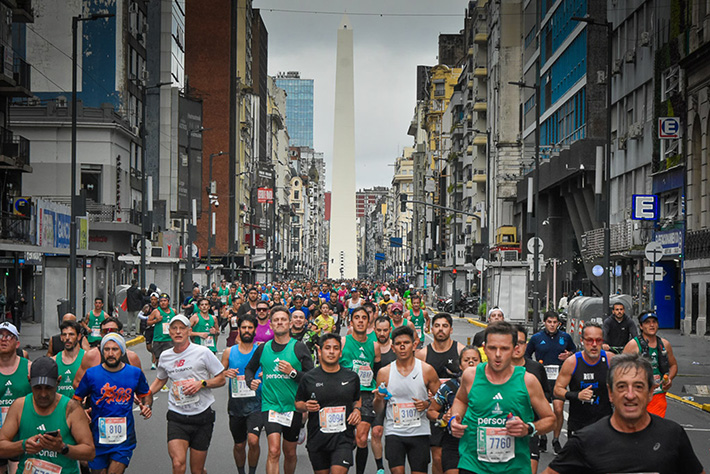
The Buenos Aires Marathon — one of the biggest and most prestigious running events in Latin America (Fotorun)
The Buenos Aires Marathon is more than just a 42.195 km race where runners can chase a personal best (PB). It’s also a fantastic “marathon tourism” experience for Brazilian amateur runners. The event is one of the largest running events in South America. Beyond the race, Buenos Aires offers an incredible culinary scene that makes the trip even more rewarding — from sweet alfajores and dulce de leche to juicy, world-famous Argentine steaks like bife de chorizo. And Buenos Aires is just a few hours away by plane from São Paulo. Esportividade traveled to Buenos Aires in partnership with Visit Buenos Aires in September 2025 and took part in the Buenos Aires Marathon — where I achieved my PB.
Watch the short video showing Buenos Aires from the marathon perspective:
Ver essa foto no Instagram
Many Brazilians choose Buenos Aires as their first international destination, just like I did 21 years ago, in 2004. It’s a great option: easy to reach by plane (our Air Canada flight from Guarulhos to Ezeiza took just 2 hours and 30 minutes), with little language barrier (Brazilians can get their message across even if they don’t speak Spanish), and full of undeniable charm. When it comes to airports, you can also choose Aeroparque, conveniently located near the marathon’s start and finish lines. Ezeiza, on the other hand, is farther away — about 33 km from Casa Rosada — but airfares are usually lower. Upon arrival at airport Ministro Pistarini (Ezeiza), you can easily use a ride-hailing app to get into the city.
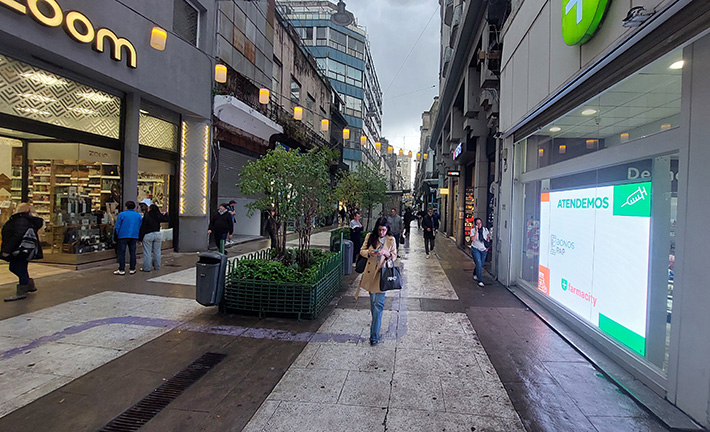
Florida Street (calle Florida), in Buenos Aires (Esportividade)
The greatest advantage of the short flight is that you can enjoy the best the city has to offer right from day one, without any jet lag, the time zone is also GMT-3. It’s almost as if the “marathon tourists” never left Brazil. In contrast, Brazilian runners participating in European marathons need to be more cautious, as long flights and time zone changes can lead to exhaustion. In Argentina’s capital, however, there’s time to enjoy a bit of “marathon tourism” before the race — and a lot more afterward.
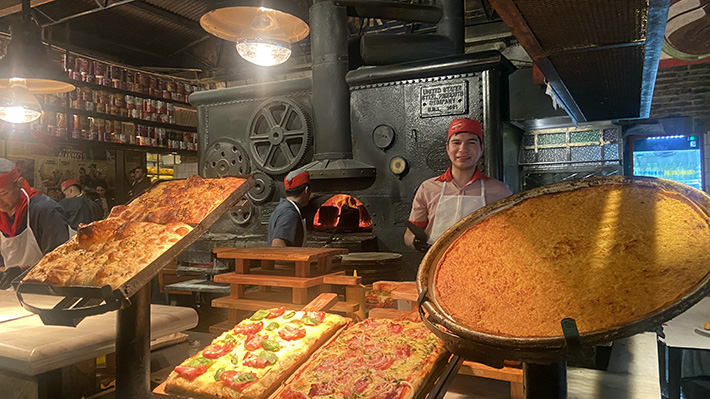
Güerrín, a traditional pizzeria on Corrientes Avenue in Buenos Aires (Esportividade)
Runners need plenty of carbohydrates before a race, especially one as long as a marathon, and in Buenos Aires, they can indulge in exceptional gastronomy! Like the city of São Paulo, Buenos Aires welcomed millions of Italian immigrants, which explains its abundance of restaurants serving pasta. A prime example is Güerrín, a pizzeria founded in 1932 on Corrientes Avenue, Argentina’s “Broadway.” Güerrín is a large restaurant, yet it gets very busy, so it’s best to arrive before 7:30 p.m.
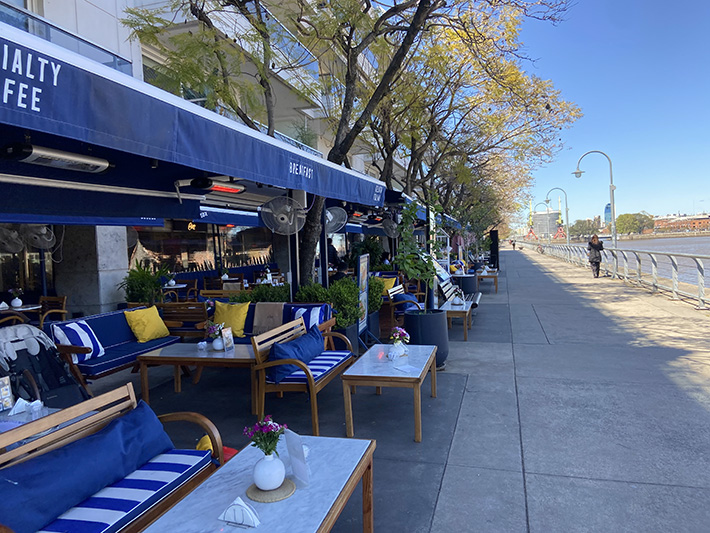
Puerto Madero, a waterfront neighborhood in Buenos Aires with a variety of restaurants (Esportividade)
Puerto Madero, a restored part of the city, offers a wide variety of restaurants and has become a gastronomic hub just a few steps from Casa Rosada, the seat of the executive branch, and Plaza de Mayo. Most restaurants accept international debit cards — still the best option for tourists today.
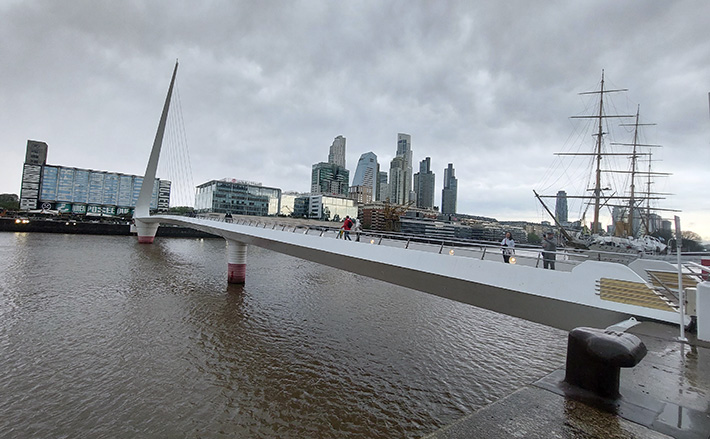
Puente de la Mujer (Women’s Bridge), in Buenos Aires (Esportividade)
In Puerto Madero, you can cross the Puente de la Mujer (Women’s Bridge) and see a highly successful urban revitalization project that began at the end of the 20th century — an initiative that should certainly serve as inspiration for São Paulo.
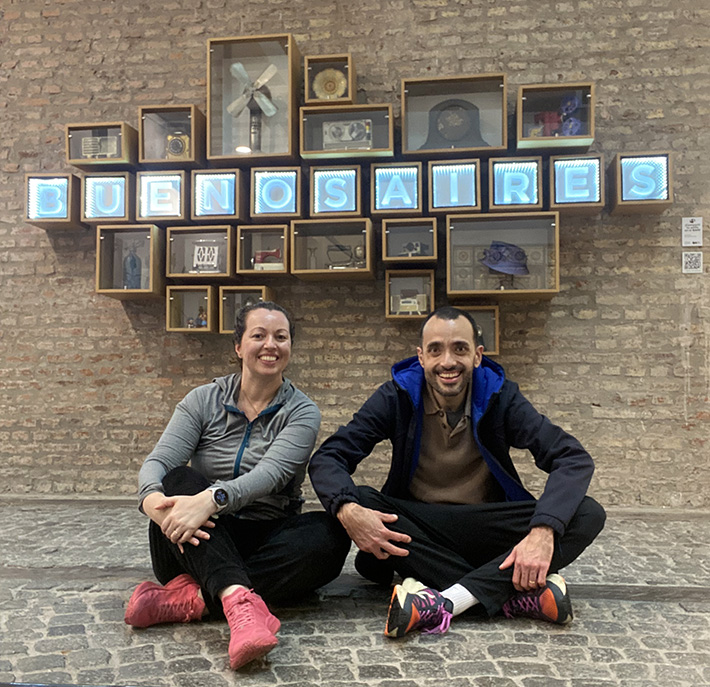
Renata and Andrei at the Buenos Aires Museo – Museo de la Ciudad (Esportividade)
The history of Buenos Aires is showcased at the Buenos Aires Museo, Museo de la Ciudad. Located just 200 meters from Plaza de Mayo, “marathon tourists” can include this attraction in their pre-marathon sightseeing plans without any extra commuting.
And where to stay? We stayed in the San Telmo neighborhood, in the same area previously mentioned, and it was delightful. The neighborhood is full of excellent restaurants and shops selling alfajores and dulce de leche — and you can find the most varied combinations there, such as dulce de leche with raspberries or dulce de leche with chocolate. However, this neighborhood is farther from the park where marathon kits are distributed, the Sarmiento, and from the start and finish areas, which are located between Aeroparque and the Hipódromo Argentino de Palermo (Argentine Racecourse in Palermo).
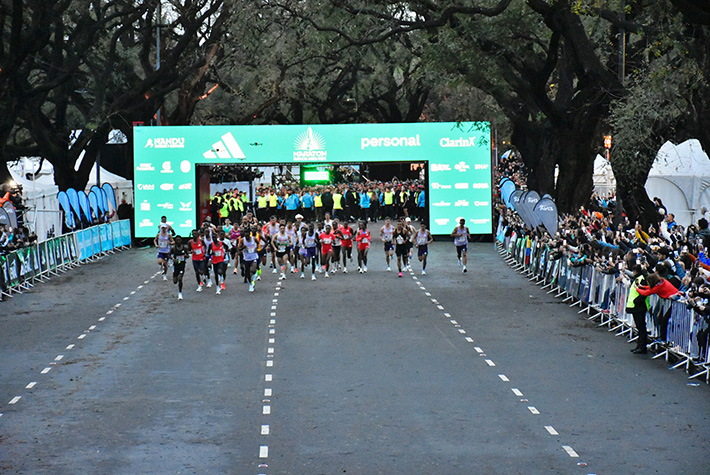
Men’s elite start line of the 2025 Buenos Aires Marathon (Fotorun)
If you’re not staying in Palermo, for example, be sure to plan ahead so you don’t miss the event’s start time, usually at 7 a.m. Since many roads are closed well before that on the Sunday of the Buenos Aires Marathon, there’s little point in giving the app driver the address of the “arena” (Presidente Figueroa Alcorta Avenue and Dorrego Avenue). Instead, in the app, enter an address about 1.2 miles away, such as Plaza Italia, and walk from there.
This is the same starting point for the Buenos Aires Half Marathon (Buenos Aires 21k), a street race also organized by Asociación Ñandú that usually takes place in August. In both events, there is only one distance: 21.097 km (August) and 42.195 km (September).
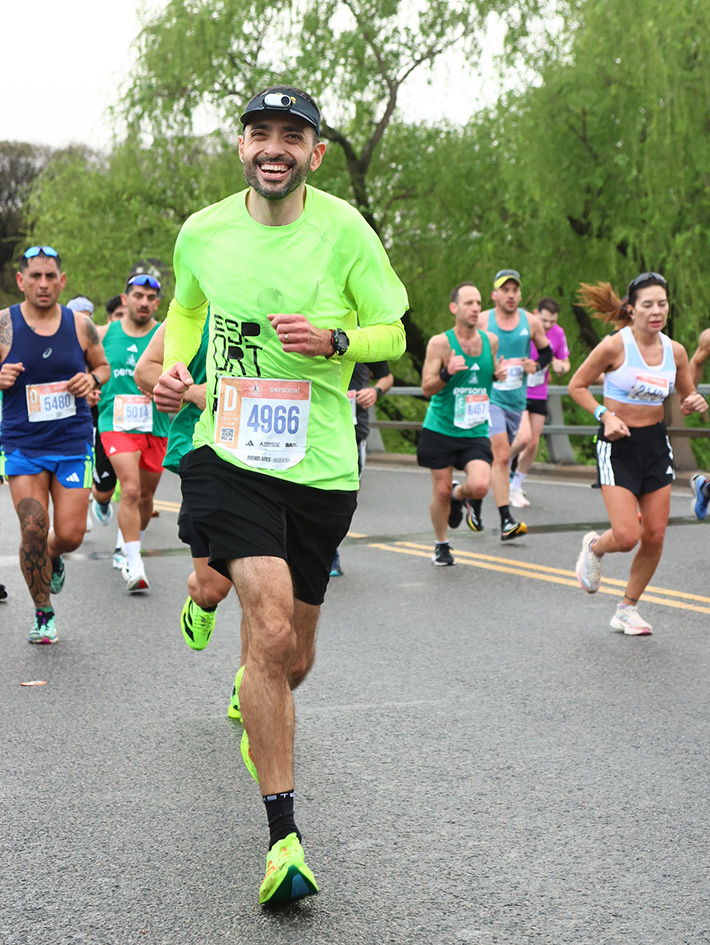
Andrei Spinassé, one of the Brazilians who participated in the 2025 Buenos Aires Marathon (Fotorun)
Why take a tourist bus when you can see Buenos Aires while running? Right from the start, the Buenos Aires Marathon is a tour in the Argentine capital. Just over 3 km into the race, participants reach the Monumental de Núñez, River Plate’s stadium. After 12 km, they return to the starting area, from where other “tourist attractions” can be explored.
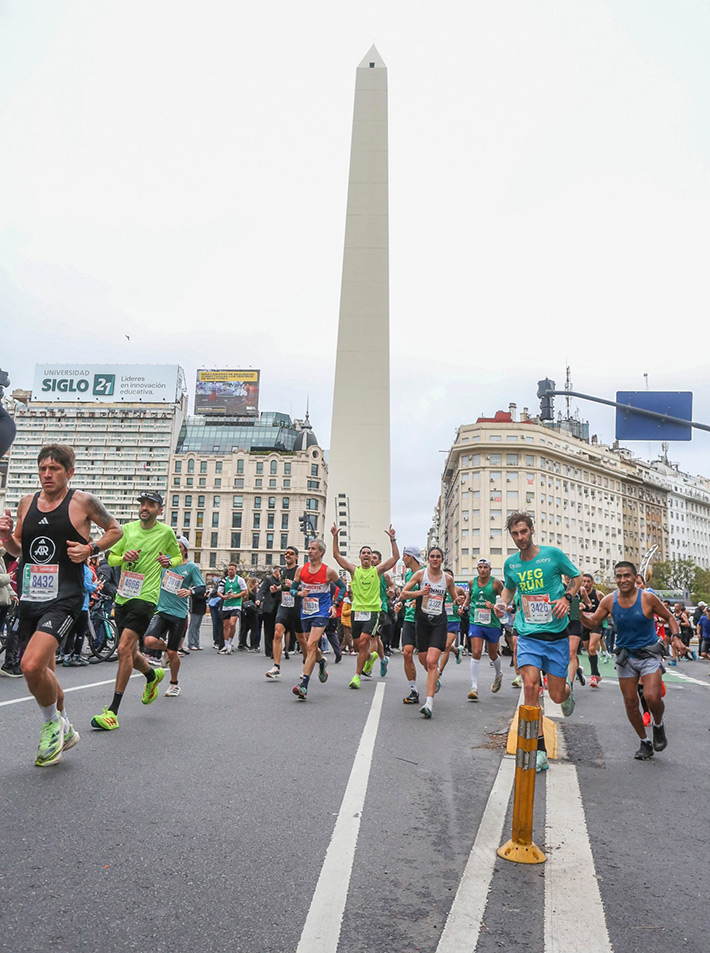
Obelisk in the background during the Buenos Aires Marathon (Fotorun)
Even before reaching the halfway point of the race, runners are surrounded by a stunning sequence of postcard-worthy attractions: the Obelisk, Corrientes Avenue, Plaza de Mayo, and Casa Rosada. They can also admire the beautiful historic buildings. There is so much to see and appreciate, and time seems to fly for the marathoners — especially at this stage, when most of them still have plenty of energy.
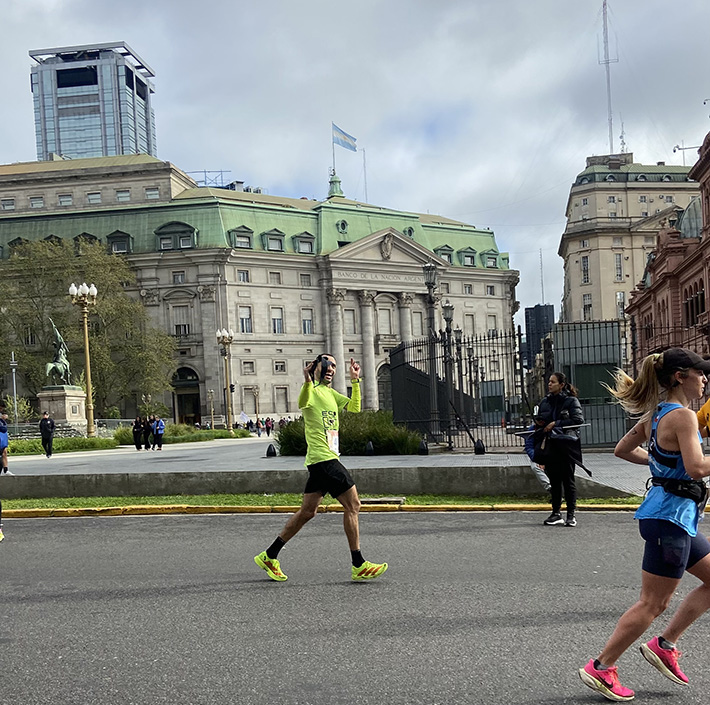
Andrei Spinassé runs past (and films) Plaza de Mayo and Casa Rosada (Esportividade)
Didn’t get a good look at the Casa Rosada? No problem: after the 24 km sign, you’ll have another chance to see it up close. After that, the third phase of the marathon begins: participants run through the La Boca neighborhood, home to Boca Juniors’ stadium, La Bombonera, and the museum-like street Caminito. Runners pass the stadium between km 27 and 28 and are cheered on by a lively crowd.
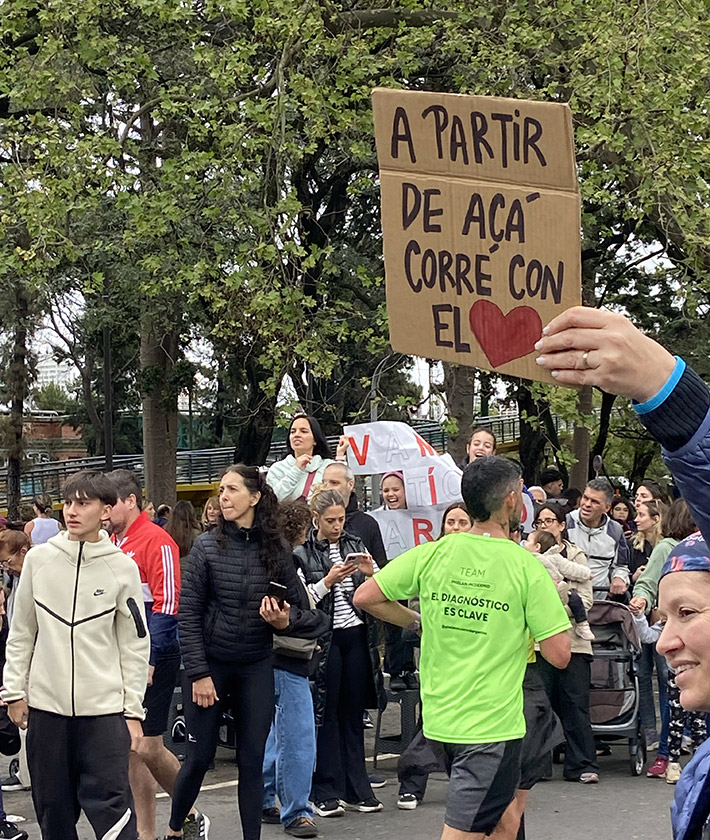
“From here on, run with your heart”, a sign shown to Buenos Aires Marathon participants (Esportividade)
The next stage of the marathon, when runners return to the starting point, demands a great deal of mental strength. And what about Puerto Madero? This is where it comes into play. Runners cross a bridge at kilometer 34, a turning point in the race, greeted by a cheering crowd at this defining moment.
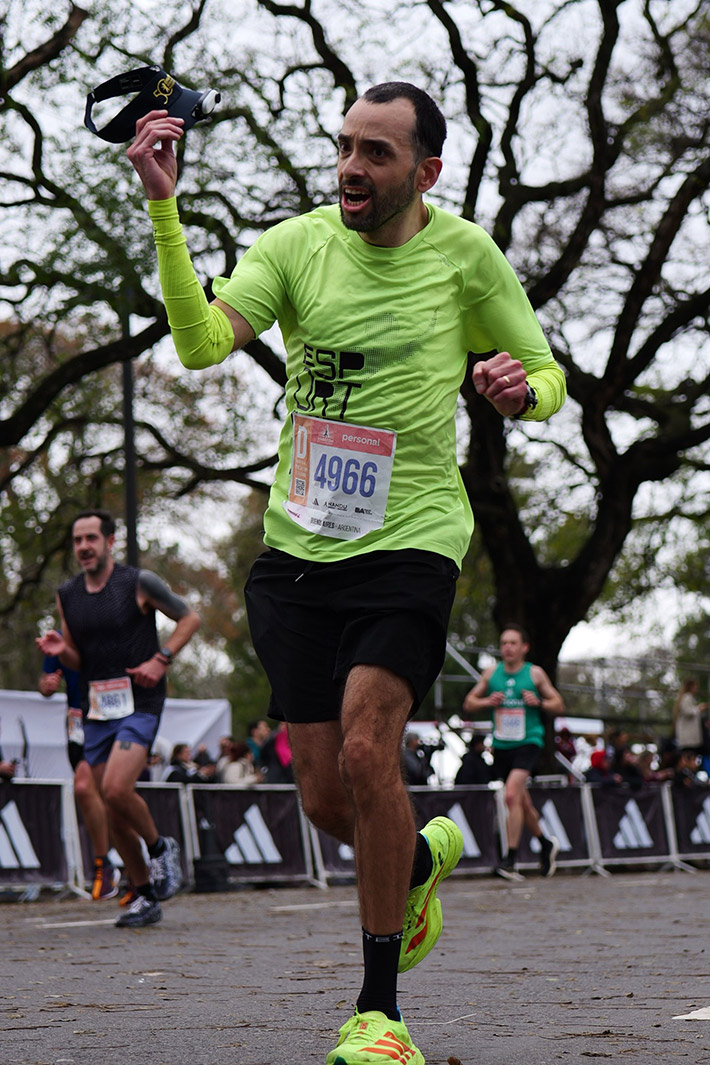
Andrei Spinassé in the final stretch of the 2025 Buenos Aires Marathon (Fotorun)
You must stay focused because the next section is one of the toughest. It runs under an overpass and is sometimes accompanied by a headwind. The challenge becomes even greater between kilometers 40 and 41, just after the Presidente Arturo Umberto Illia highway, as runners face one of the few climbs in the race. A right turn then takes them into the final stretch of the 42.195 km, where they may even run faster than before, approaching the finish line of the iconic Buenos Aires Marathon.
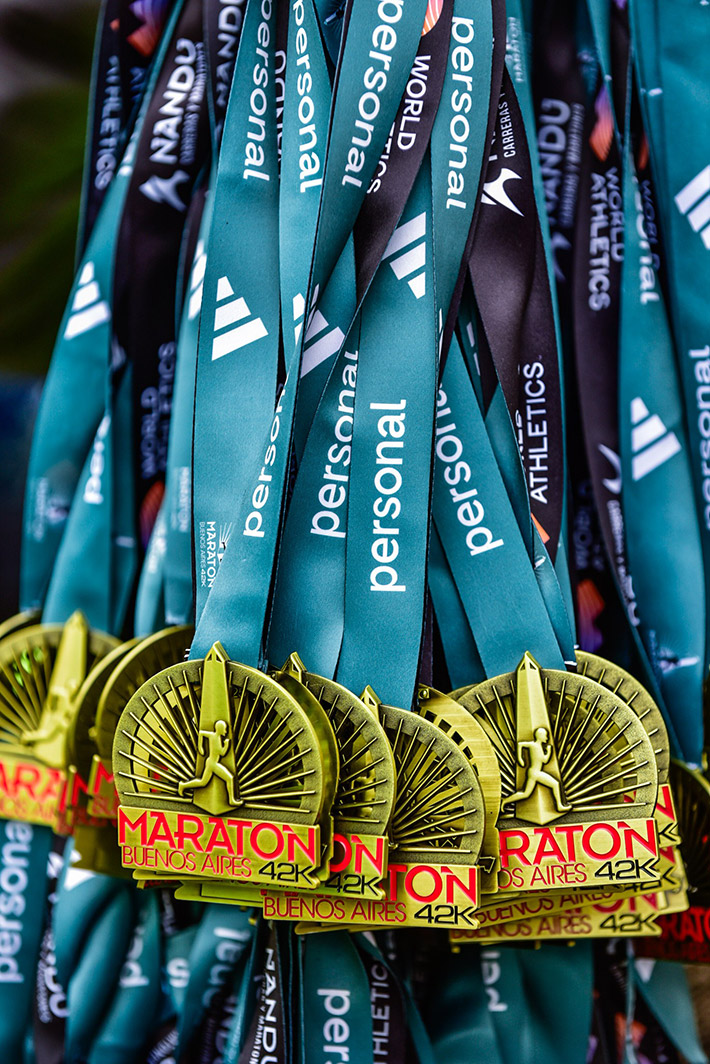
2025 Buenos Aires Marathon medals (Fotorun)
It was the greatest achievement of my amateur running journey. This was my 14th marathon, and I finished the race in under 3h30min for the first time — 3h29min01, to be exact — with an average pace of 4min57s per kilometer. The weather conditions helped me achieve my personal best. For example, the temperature remained below 15ºC throughout the race on September 21, 2025.
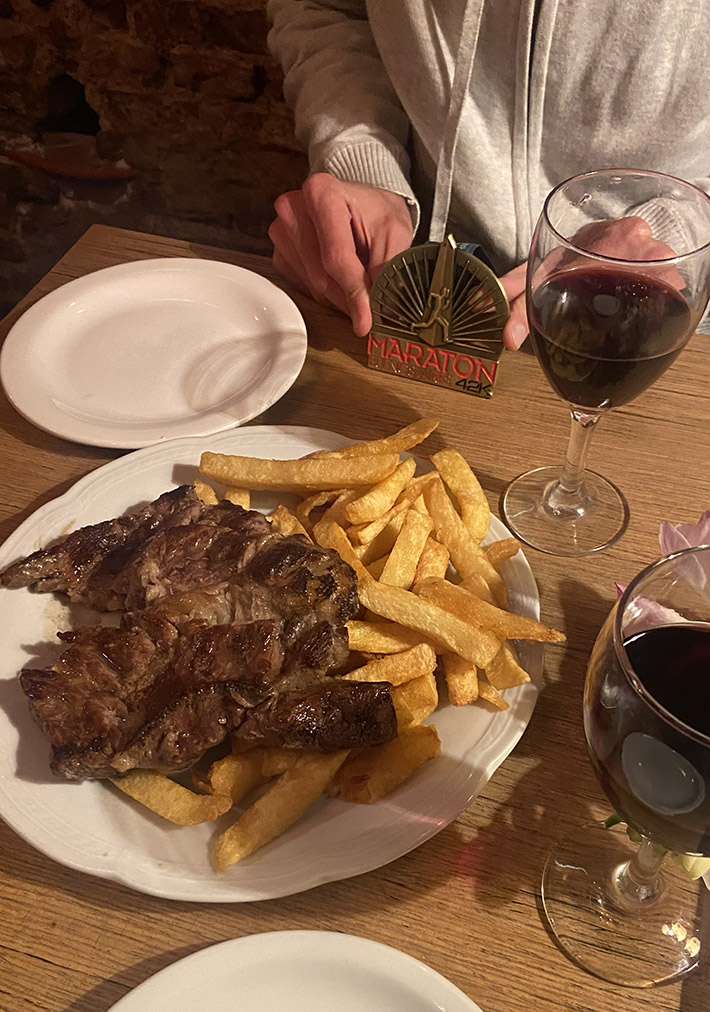
Chorizo steak, French fries, wine, and a 2025 Buenos Aires Marathon medal (Esportividade)
To celebrate this personal achievement, there’s nothing better than a juicy Argentinian steak, such as bife de chorizo, and good wine. Renata Sá and I enjoyed that on Sunday evening in San Telmo.
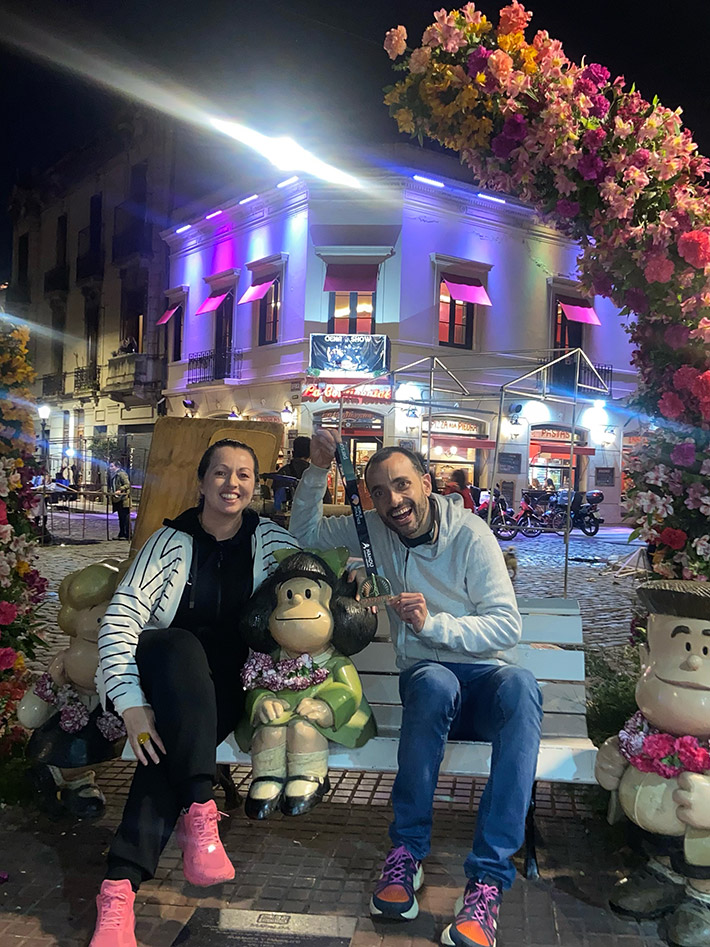
Renata, Andrei, Mafalda, and the 2025 Buenos Aires Marathon medal (Esportividade)
We took the medal “for a walk,” and along the way we “met” Mafalda, the character created by Argentinian cartoonist Quino.
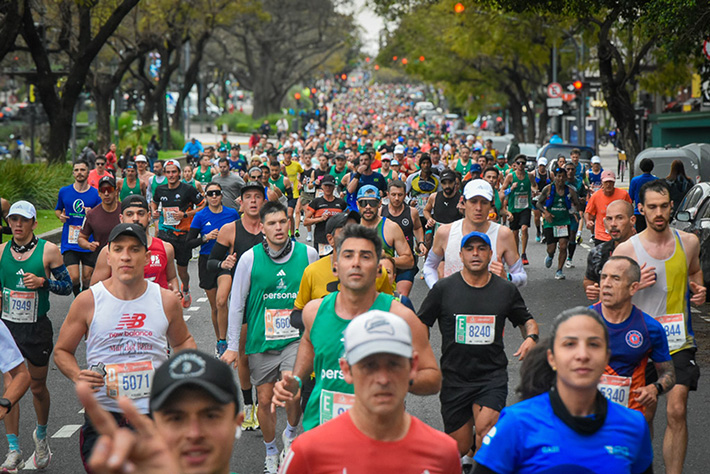
Participants in the Buenos Aires Marathon: Brazilians are part of the pack (Fotorun)
In 2025, 12,774 runners officially completed the Buenos Aires Marathon. The number of Brazilians was significant, making up around 14.8% of the participants. The percentage of international runners was also high, at 30%, with Brazilians accounting for nearly half of them (49%). Additionally, 1,891 Brazilians appeared in the general ranking of the 2025 Buenos Aires Marathon.
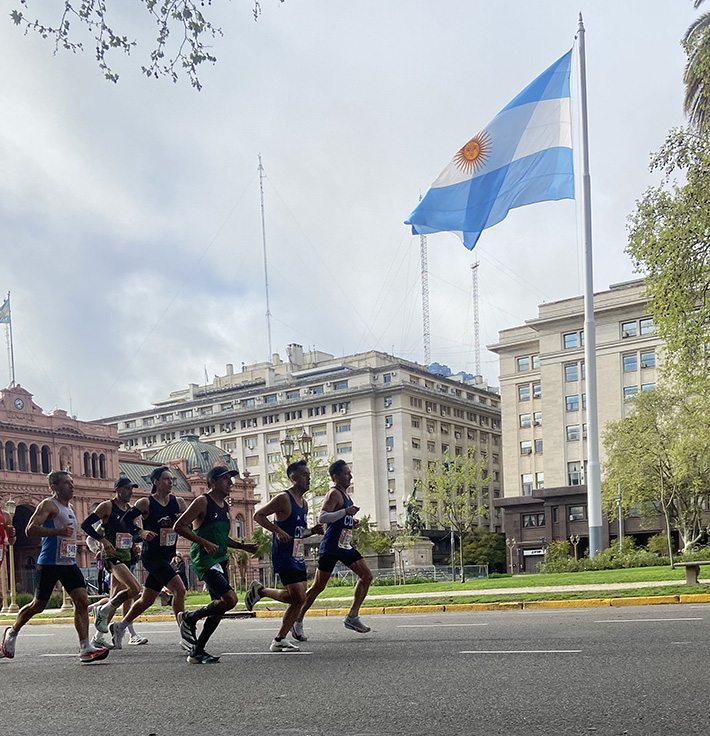
With Casa Rosada and Plaza de Mayo in the background, athletes run the Buenos Aires Marathon (Esportividade)
Some other relevant information: in 2025, registrations cost 100 dollars for international participants. Registrations for the 2026 race have not yet opened. Direct flights from Guarulhos to Ezeiza usually cost around BRL 1,300. Thanks to Mercosur agreements, Brazilian travelers do not need a passport to enter Argentina; a valid Brazilian ID is sufficient. During the marathon, hydration stations alternated between water stations (served in sealed plastic bottles) and isotonic drink stations. The 2025 edition shirt was a racerback design. Last but not least participants must submit a medical certificate in advance confirming they are fit to run.
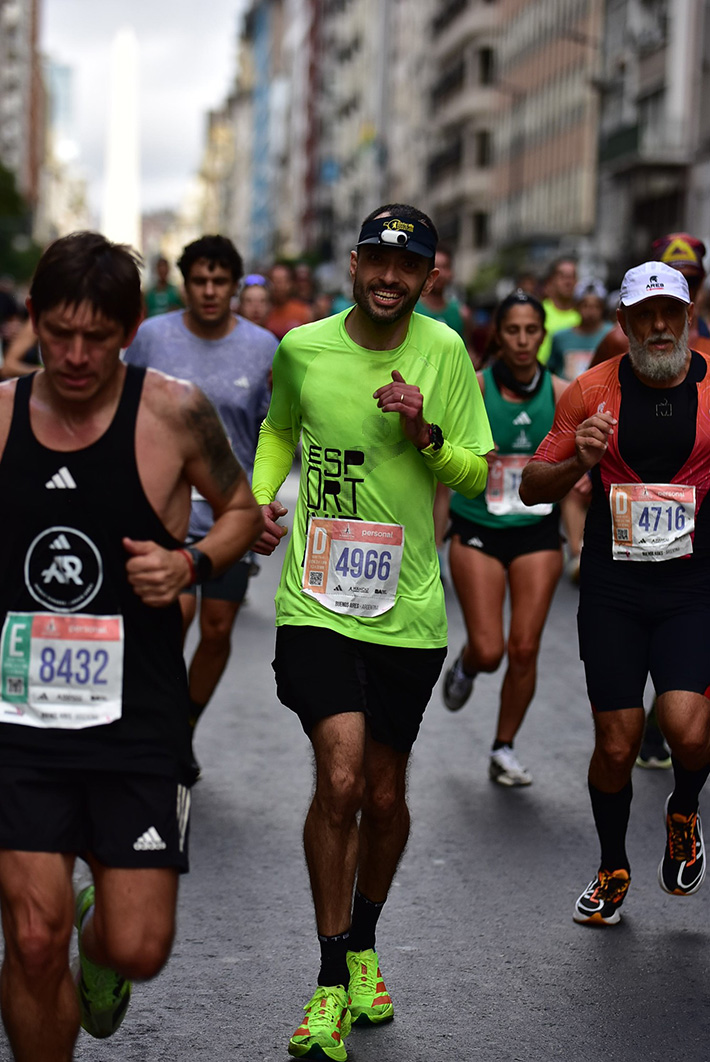
Andrei Spinassé runs the 2025 Buenos Aires Marathon (Fotorun)
Esportividade’s coverage of the 2025 Buenos Aires Marathon was supported by and provided in partnership with Visit Buenos Aires.
